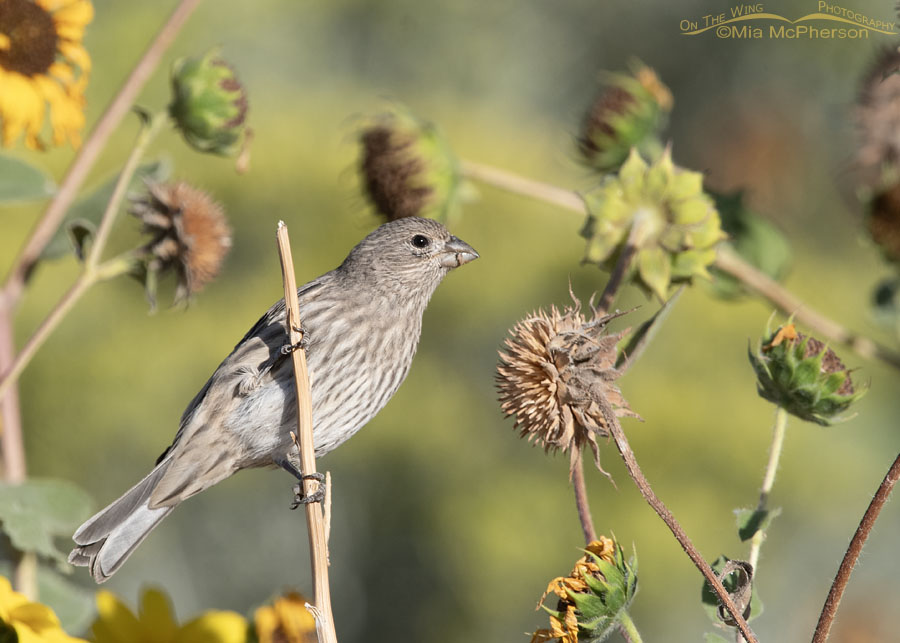I was tickled to photograph this female House Finch last week in sunflowers that had gone to seed. I liked the finch, the autumn colors, and the morning light.
 Adult female House Finch in sunflowers gone to seed – Nikon D500, f8, 1/1000, ISO 500, Nikkor 500mm VR with 1.4x TC, natural light
Adult female House Finch in sunflowers gone to seed – Nikon D500, f8, 1/1000, ISO 500, Nikkor 500mm VR with 1.4x TC, natural light
The sunflowers:
Abundantly noticeable in northern Utah, Common Sunflowers are native wildflowers that aren’t just pretty; they also serve as wild bird food. Seed-eating birds literally flock to these sunflowers when they have gone to seed.
There may be people who don’t care for the appearance of the dried sunflower seedheads. I do because I know what they do. They are excellent bird attractants.
During late summer and early fall, these vibrant yellow wildflowers also draw in bees, spiders, butterflies, flies, moths, and various other insects. Those insects also attract birds. When both seed and insect eating birds are drawn to a wildflower, it earns my admiration as well. Additionally, Common Sunflowers are drought resistant, in a desert state having a water crisis, these plants thrive.
The House Finch:
Female House Finches are a duller than the males, but in my opinion, they have subtle beauty.
I find these finches in a variety of habitats including urban areas, mountains, deserts, sagebrush steppes, and near alpine creeks, city ponds and parks.
House Finches are year round residents in northern Utah which is part of their historical range. House Finches were introduced to the eastern half of North America and Hawaii.
As a side note, I noticed something interesting about the male House Finches that I saw in Arkansas and Oklahoma this spring and early summer while visiting my dear friend and excellent wildlife photographer, Steve Creek.
The male House Finches in those locations were much more vibrantly colored than those here in northern Utah.
Since the males of this species get their coloration from their diet, it makes me wonder what the male finches in Arkansas and Oklahoma were eating there to be so brightly colored.
Yes, I always have birds and everything connected to them on my mind. It’s my nature.
Life is good.
Mia
Click here to see more of my House Finch photos plus facts and information about this species.


What an extraordinary shot! I love the balance in your composition and the detail is incredible. Like you…I think the subtle coloring of the female finch is gorgeous. Thanks Mia.
When not in people’s gardens sunflowers are grown as a crop here, and the farmers curse the birds. I love the thought of wild ones nurturing birds and insects.